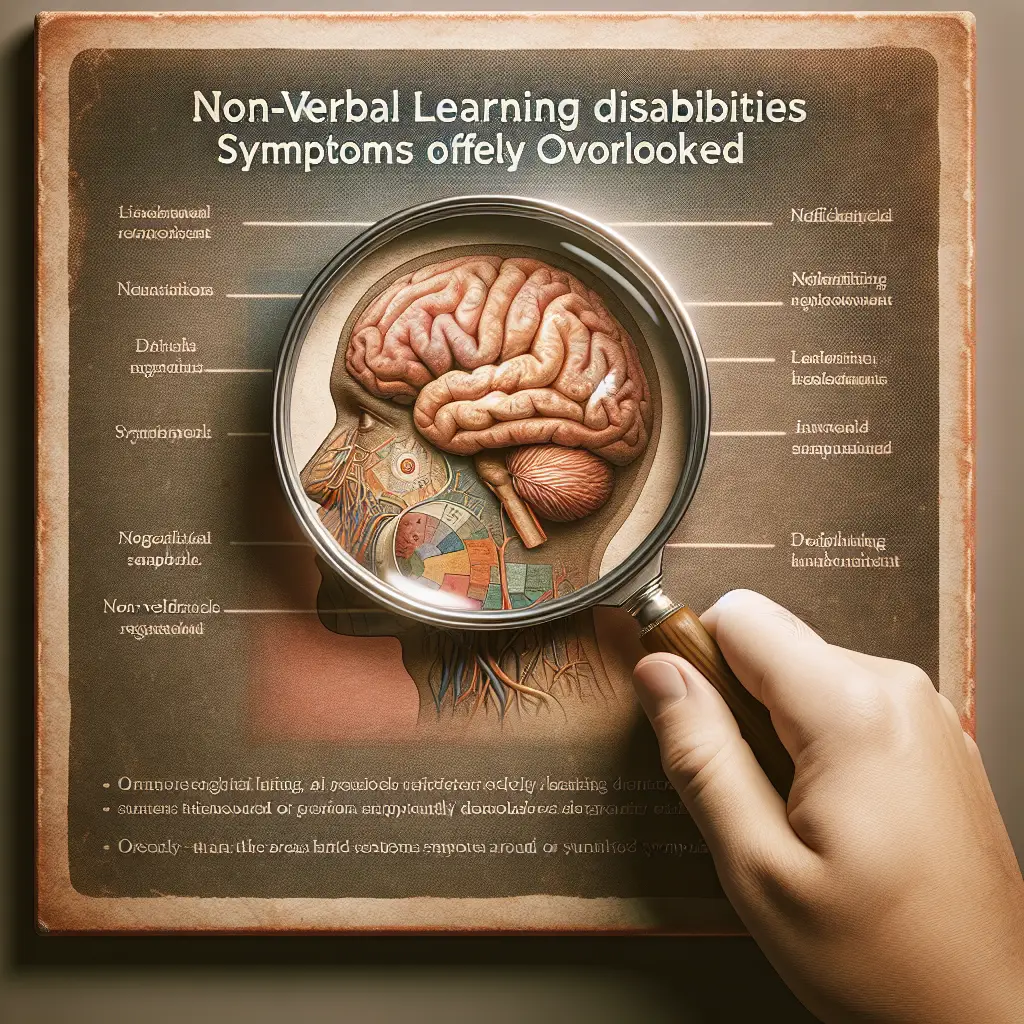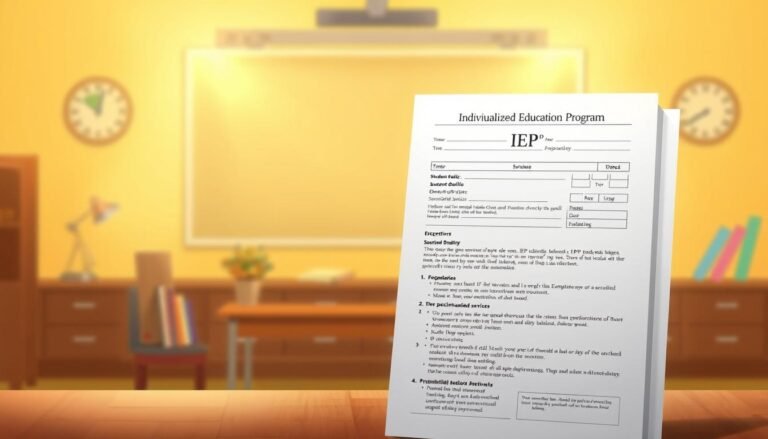
Non-Verbal Learning Disabilities: Symptoms Often Overlooked – The Essential Insights You Need to Know
Introduction
In a world that heavily relies on verbal and written communication, children with Non-Verbal Learning Disabilities (NVLD) often find themselves at a disadvantage. As parents, educators, and healthcare professionals, it is crucial to recognize that NVLD is a distinct neurodevelopmental disorder that presents a unique set of challenges. Unfortunately, these symptoms are frequently overlooked, leading to emotional distress and educational obstacles for the individuals affected.
This article aims to shed light on those Non-Verbal Learning Disabilities: Symptoms Often Overlooked while providing invaluable insights and real-world applications. By understanding this often-misunderstood learning disability, we can promote awareness, spark conversations, and create a more inclusive environment for those struggling in silence.
Understanding Non-Verbal Learning Disabilities (NVLD)
Non-Verbal Learning Disabilities are characterized primarily by a discrepancy between verbal and non-verbal skills. Children with NVLD usually excel in verbal tasks such as reading, writing, and verbal communication but struggle significantly with non-verbal skills, including spatial awareness, social cues, and motor coordination.
Key Symptoms of NVLD
Some of the Non-Verbal Learning Disabilities: Symptoms Often Overlooked include:
- Social Difficulties: Children may struggle to understand social nuances, leading to misunderstandings in peer interactions.
- Visual-Spatial Challenges: Difficulty interpreting visual information, navigation skills, and understanding diagrams can hinder learning experiences.
- Fine and Gross Motor Skills Delays: Children may face challenges with coordination, making tasks like writing or participating in sports difficult.
- Rigid Thinking and Routine Dependency: Many children with NVLD prefer structure and can become distressed when routines are disrupted.
Case Study: Timmy’s Journey
Timmy, a bright 10-year-old, could recite complex stories and excelled in reading comprehension, but his inability to engage in social settings and difficulties navigating the playground left him isolated from his peers. Timmy’s experience underlines the Non-Verbal Learning Disabilities: Symptoms Often Overlooked that educators and parents must recognize. By applying social stories and visual aids, Timmy’s parents helped him navigate social situations, demonstrating that support systems can profoundly impact a child’s experience with NVLD.
NVLD versus Other Learning Disabilities
It’s essential to distinguish NVLD from other common learning disabilities such as ADHD or dyslexia. While these disabilities often overlap, they manifest differently:
| Learning Disability | Key Characteristics | Overlapping Symptoms |
|---|---|---|
| NVLD | Strong verbal skills, weak non-verbal skills | Impulsivity, Inattention |
| ADHD | Difficulties with attention and impulse control | Social difficulties and underachievement |
| Dyslexia | Challenges with reading, spelling, and writing | Potential social misunderstandings |
The Importance of Accurate Diagnosis
Accurate diagnosis of Non-Verbal Learning Disabilities: Symptoms Often Overlooked is critical. Misdiagnosis can lead to inappropriate academic interventions and emotional struggles. Collaboration among educators, mental health professionals, and parents can ensure a comprehensive evaluation process that respects the child’s unique needs.
The Hidden Struggles: Emotional and Psychological Impact
Children with NVLD often report feelings of frustration and isolation. Because their strengths in verbal tasks may mask their difficulties, they may be misunderstood as being less capable or simply “lazy.”
Emotional Symptoms of NVLD
- Anxiety: Uncertainty in social settings can lead to significant anxiety.
- Low Self-Esteem: Struggles with non-verbal tasks may impact a child’s self-assessment of their abilities.
- Depression: Chronic feelings of inadequacy may lead to depressive symptoms as they navigate social challenges.
Case Study: Sarah’s Challenge
Sarah, a 12-year-old with NVLD, struggled with social interactions, particularly during group projects at school. Despite her intelligence, Sarah felt invisible among her peers, leading to anxiety and low self-esteem. By implementing cognitive-behavioral techniques focusing on self-acceptance and resilience, Sarah began to recognize her strengths, illustrating a critical component of addressing Non-Verbal Learning Disabilities: Symptoms Often Overlooked.
Support Strategies for Parents and Educators
Understanding the Non-Verbal Learning Disabilities: Symptoms Often Overlooked is the first step; however, implementing effective strategies is vital for success.
1. Visual Supports
Visual aids can significantly help children with NVLD understand concepts better. Use diagrams, charts, and graphic organizers to enhance comprehension.
2. Social Skills Training
Engaging children in social skills groups can provide them with practical experience and strategies to enhance their interpersonal skills.
3. Consistent Routines
Creating structured environments with predictable schedules can provide a sense of security for children with NVLD, reducing anxiety and helping them to thrive.
4. Multi-Sensory Learning
Encouraging multi-sensory approaches that integrate tactile, visual, and auditory elements can make learning more accessible for those with NVLD.
Case Study: Alex’s Progress
Alex, diagnosed with NVLD, blossomed when his school incorporated visual schedules and social skills training into his daily routine. Over time, Alex not only improved his academic performance but also gained confidence in social settings, showcasing how understanding Non-Verbal Learning Disabilities: Symptoms Often Overlooked can lead to profound improvements in a child’s life.
The Road to Advocacy and Awareness
Advocating for children with NVLD is crucial. Raising awareness about Non-Verbal Learning Disabilities: Symptoms Often Overlooked can lead to better identification and support systems.
1. Educating Teachers and Staff
Training programs highlighting NVLD characteristics can help educators recognize the signs and implement supportive classroom strategies.
2. Parental Guidance
Providing parents with resources to understand NVLD helps them become effective advocates for their children, ensuring their needs are met at school.
3. Community Involvement
Encouraging community discussions can foster understanding and inclusivity, ensuring that children with NVLD feel nurtured and supported.
Conclusion
Non-Verbal Learning Disabilities: Symptoms Often Overlooked encompass a unique set of challenges that, when properly understood and addressed, can lead to significant improvements in a child’s quality of life. By increasing awareness and developing proactive strategies, we can pave the way for children with NVLD to thrive academically, socially, and emotionally.
Each child’s journey is unique, and with the right support, understanding, and love, we can help them navigate a world that may initially seem daunting.
FAQs
1. What are the common signs of NVLD?
Common signs of NVLD include difficulties with social interactions, struggling to interpret non-verbal cues, and having challenges with motor skills.
2. How is NVLD diagnosed?
Diagnosing NVLD requires a comprehensive evaluation by a team of professionals, including psychologists, educators, and medical experts, to assess both verbal and non-verbal skills.
3. Can NVLD co-occur with other disabilities?
Yes, NVLD can co-occur with other conditions such as ADHD, anxiety disorders, or dyslexia, making it essential to evaluate each child holistically.
4. What educational strategies can support a child with NVLD?
Strategies such as using visual supports, providing consistent routines, and incorporating social skills training can significantly benefit children with NVLD.
5. Can NVLD improve over time?
With appropriate interventions and support, many children with NVLD can improve their skills and navigate their challenges more effectively.
6. Where can I find resources for NVLD?
Resources can often be found through educational institutions, local support groups, or organizations specializing in learning disabilities that provide information, workshops, and support networks.
This comprehensive exploration of Non-Verbal Learning Disabilities: Symptoms Often Overlooked aims to foster understanding, support, and advocacy for children facing these unique challenges. Together, we can make a significant difference in their lives.
















